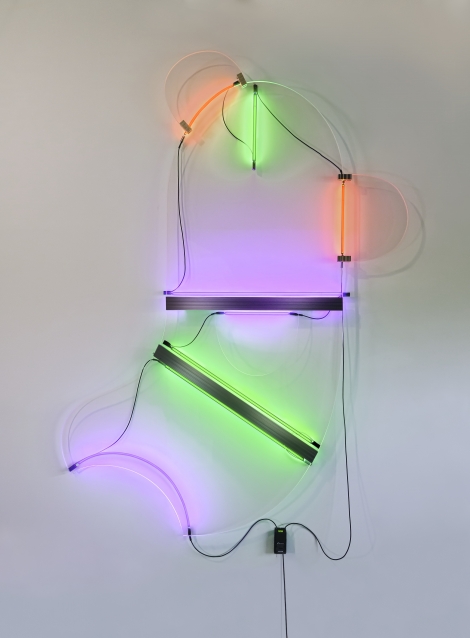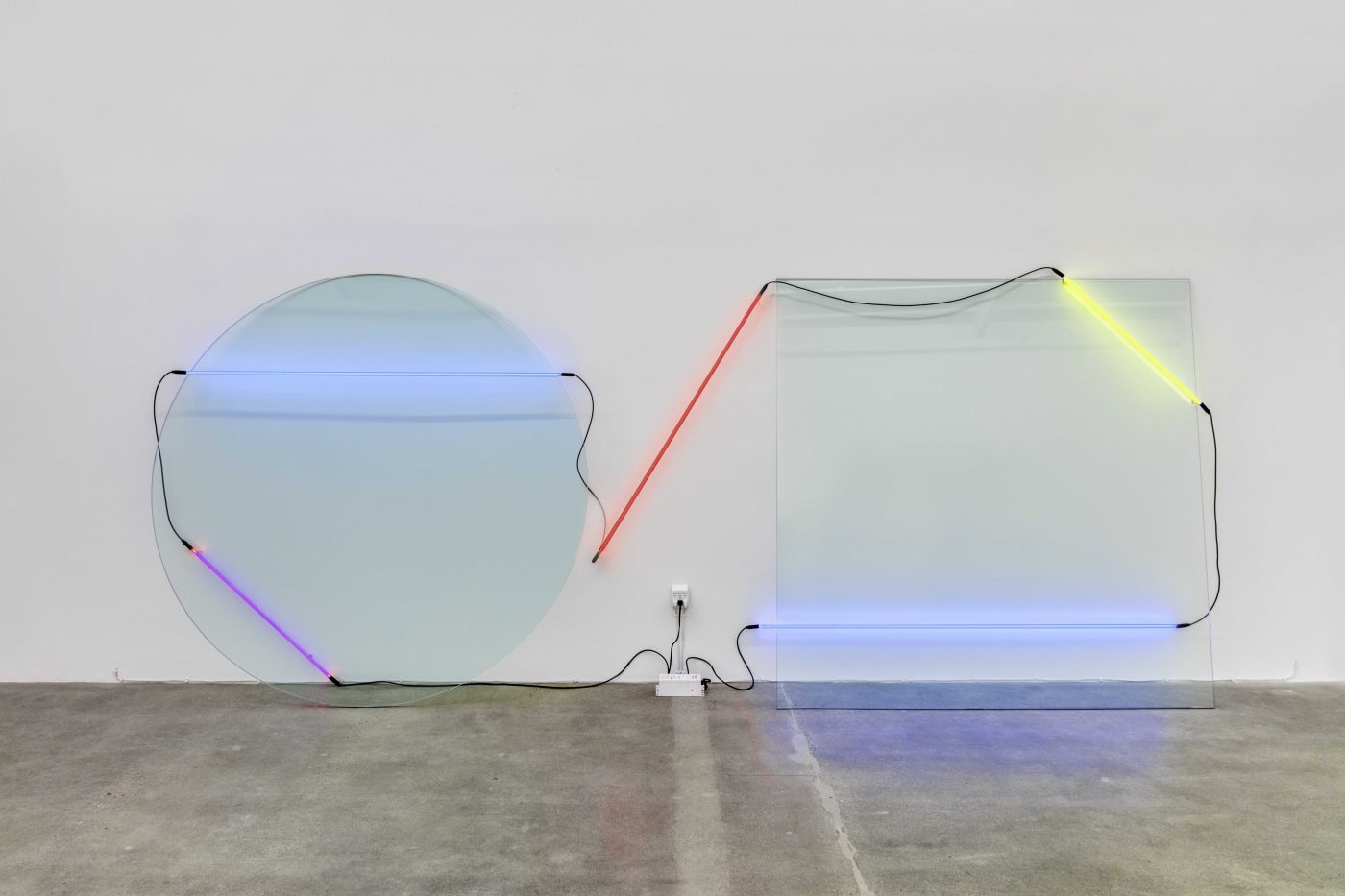Keith Sonnier, a pioneering figure in the fields of conceptual, video, and performance art in the 1960s, radically reframed the function of sculpture. Keith Sonnier: Until Today is the first solo exhibition in 35 years in an American museum of work by the artist, revealing his diverse output from 1967 to the present.
Sonnier came of artistic age in the 1960s, part of a group of artists who created sculpture by experimenting with materials and techniques outside traditional forms. Now recognized as one of America’s most influential artists, Sonnier was one of the first to incorporate light in sculpture—an innovation that forms the foundation of his work.
Keith Sonnier: Until Today is the first solo exhibition in 35 years in an American museum of work by the artist, who lived and worked in Bridgehampton, Long Island, for more than two decades. It considers the full extent of Sonnier’s achievement with more than 30 works dating from 1967 to the present and features the artist’s important and ever-evolving neon sculpture, as well as sound pieces, a site-specific neon installation in the Museum’s spine, and work rarely shown in the U.S.—large-scale sculpture influenced by his deep interest in other cultures.
The exhibition, organized for the Parrish Art Museum by guest curator Jeffrey Grove and Museum Director Terrie Sultan, travels to the New Orleans Museum of Art following the Parrish presentation. It is accompanied by a fully illustrated, 160-page book, with essays by Grove, architecture critic Martin Filler, Katie Pfohl, Curator of Modern and Contemporary Art at the New Orleans Museum of Art, and an in-depth interview between Sonnier and Sultan.
A limited edition piece by Keith Sonnier titled Looped Grid is available at Art+Culture Projects by clicking here. Proceeds support the exhibition at the Parrish.
Keith Sonnier: Until Today is made possible, in part, by the generous support of The James and Charlotte Park Brooks Fund; Douglas Baxter; National Endowment for the Arts; Pace Gallery, New York; Barbara Slifka; Compass; Dorothy Lichtenstein; Barbara Bertozzi Castelli; Linda Hackett and Melinda Hackett/ CAL Foundation; The Hamamoto Family; The Evelyn Toll Family Foundation; The Mr. and Mrs. Raymond J. Horowitz Fund for Publications; Gillian Spreckels Fuller; Linda and Gregory Fischbach; and the Herman Goldman Foundation. Additional thanks to Ellen Cantrowitz; William and Bettina Cisneros; Sandy and Stephen Perlbinder; Michèle and Steven Pesner; Fred and Robin Seegal; and Michael Straus
FEATURED PUBLICATION
Jeffrey Grove, with essays by Martin Filler and Katie Pfohl, and a conversation with the artist by Terrie Sultan




